Archive
2021
KubaParis
Gasp
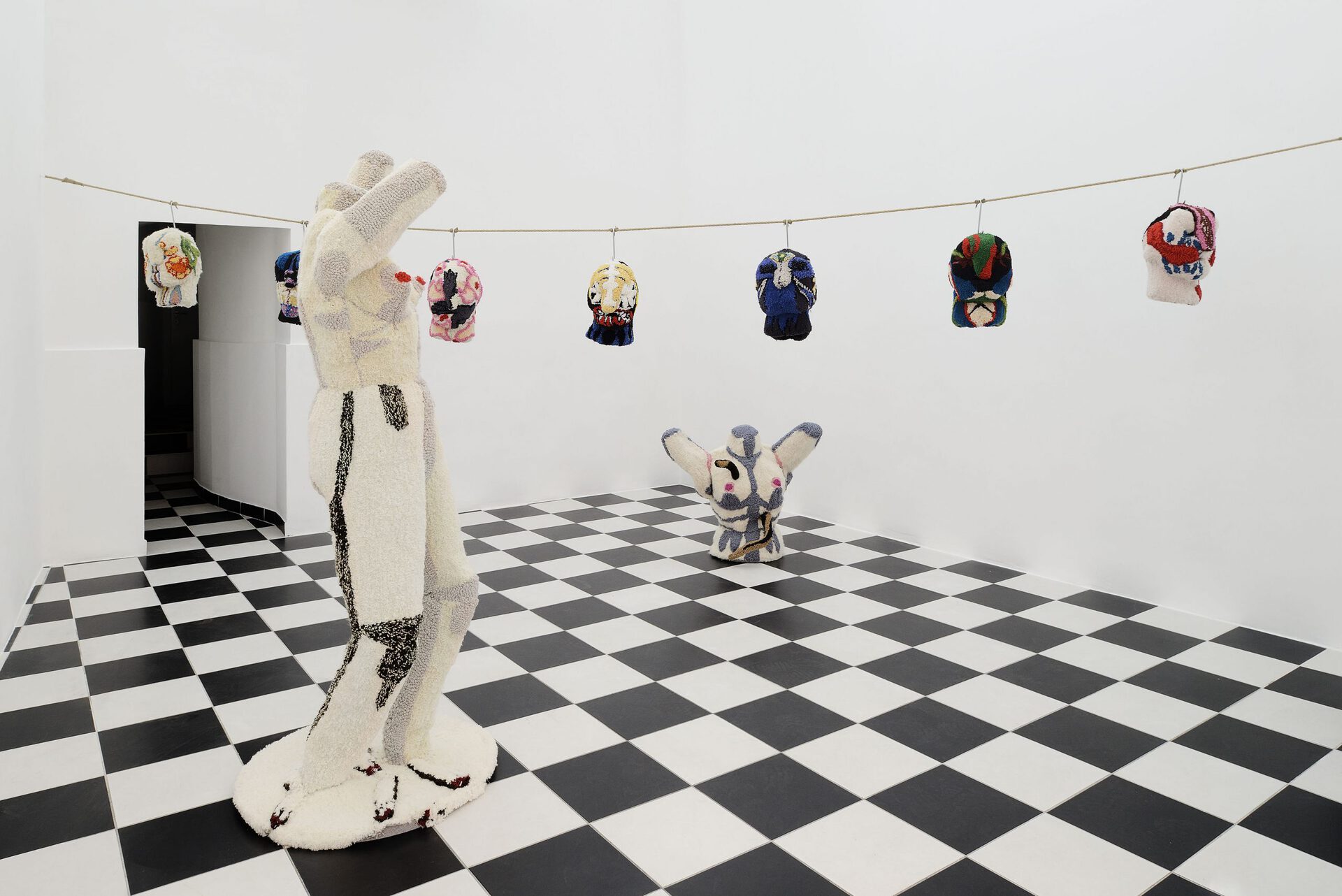
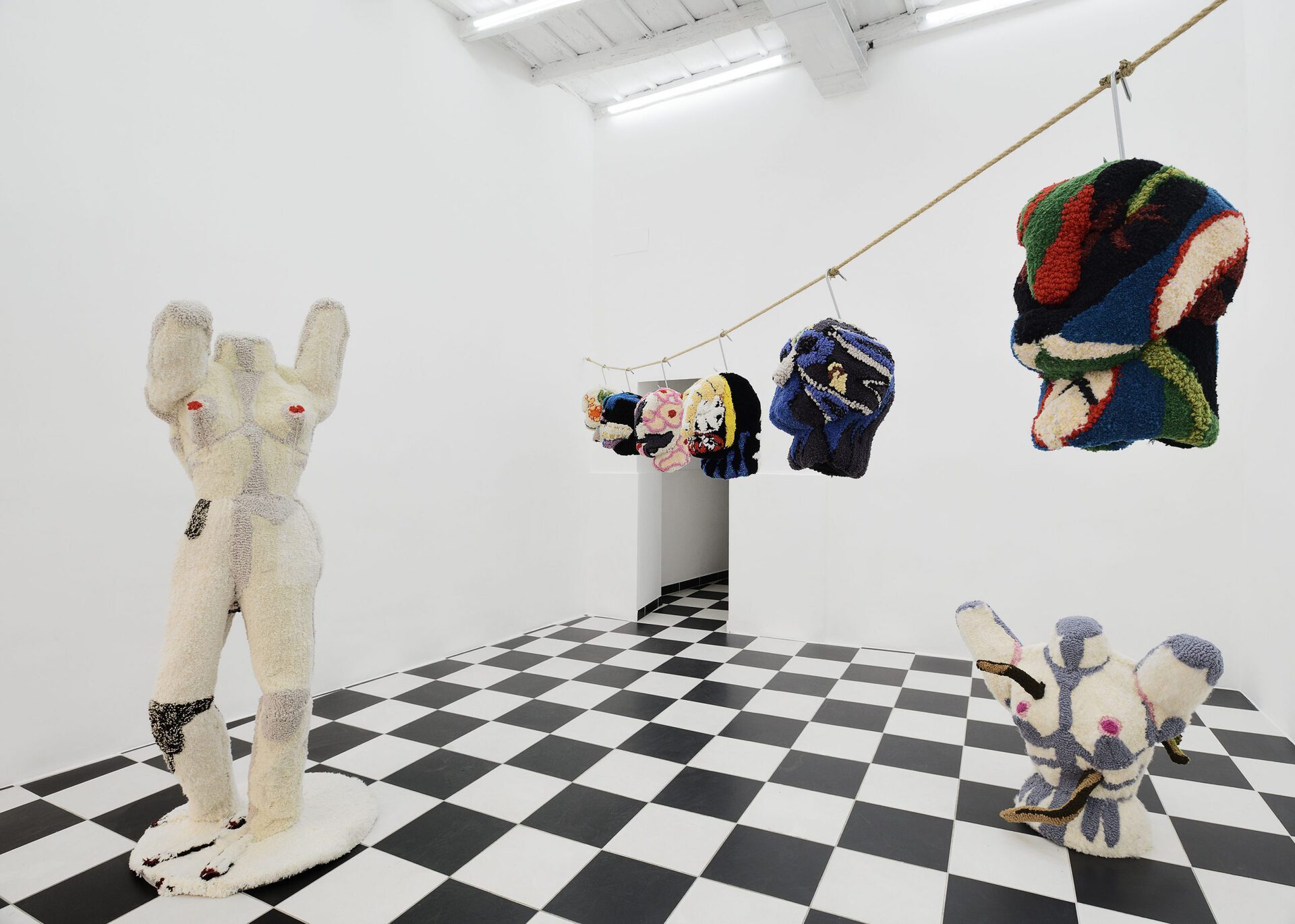

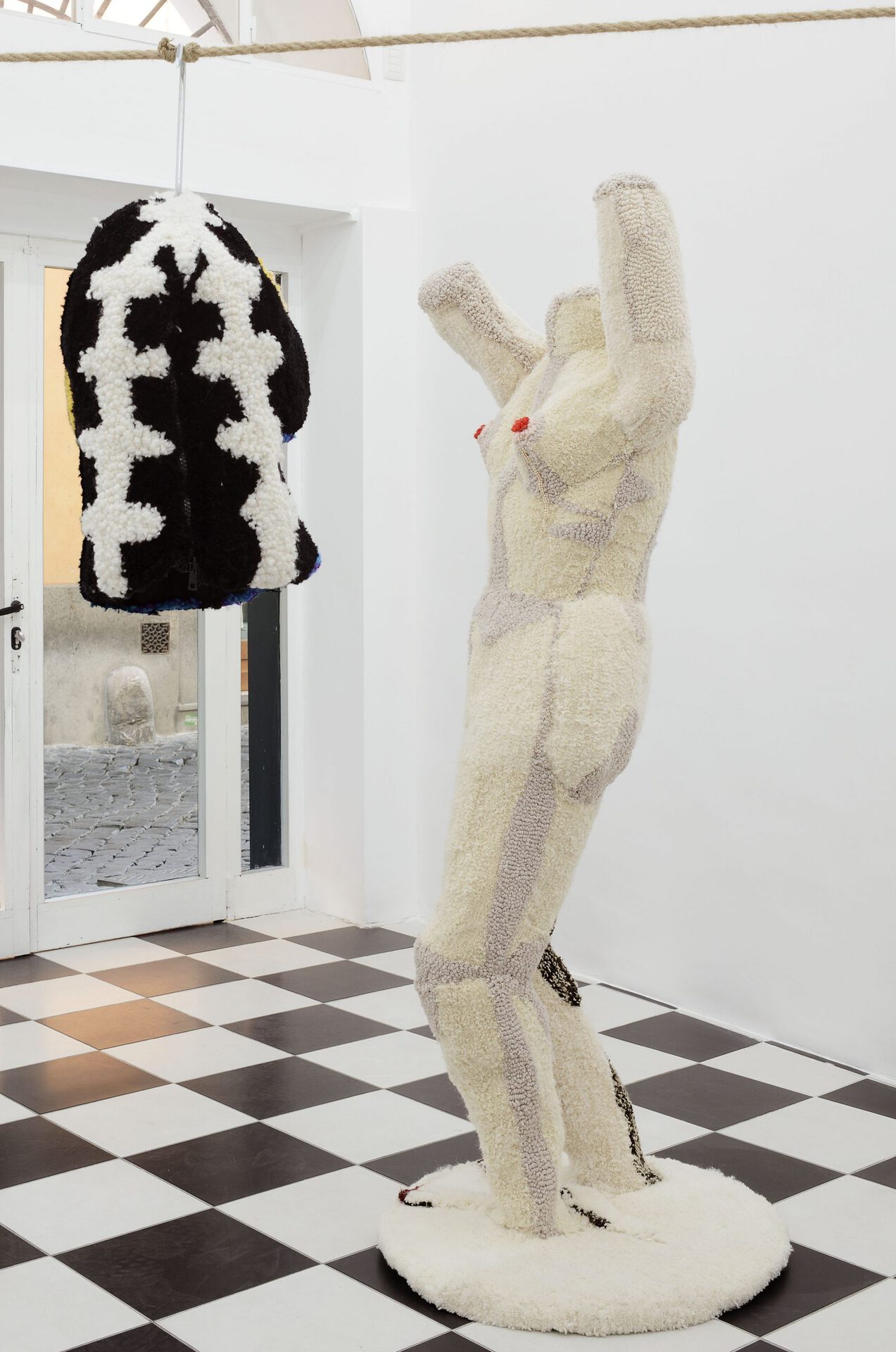

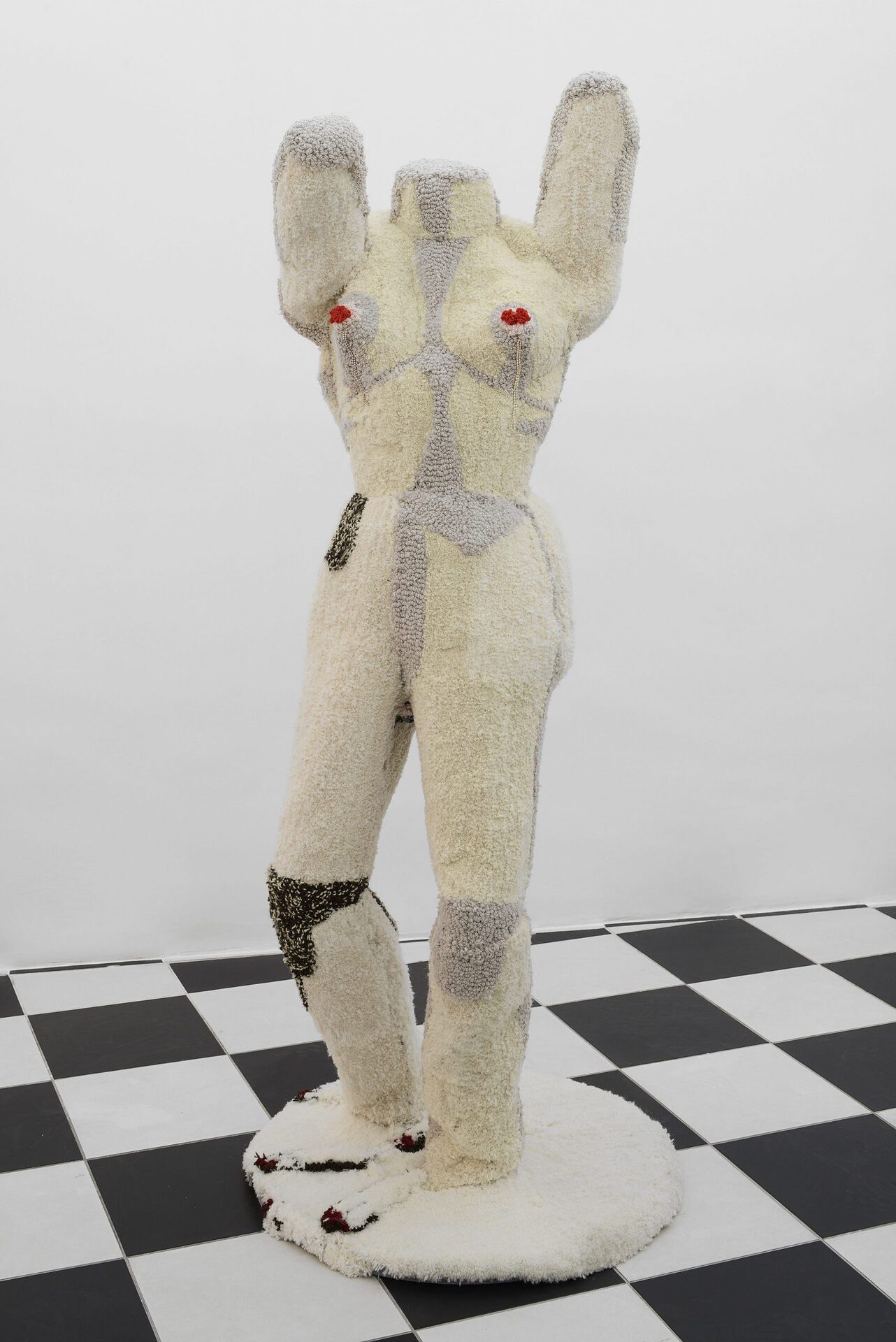

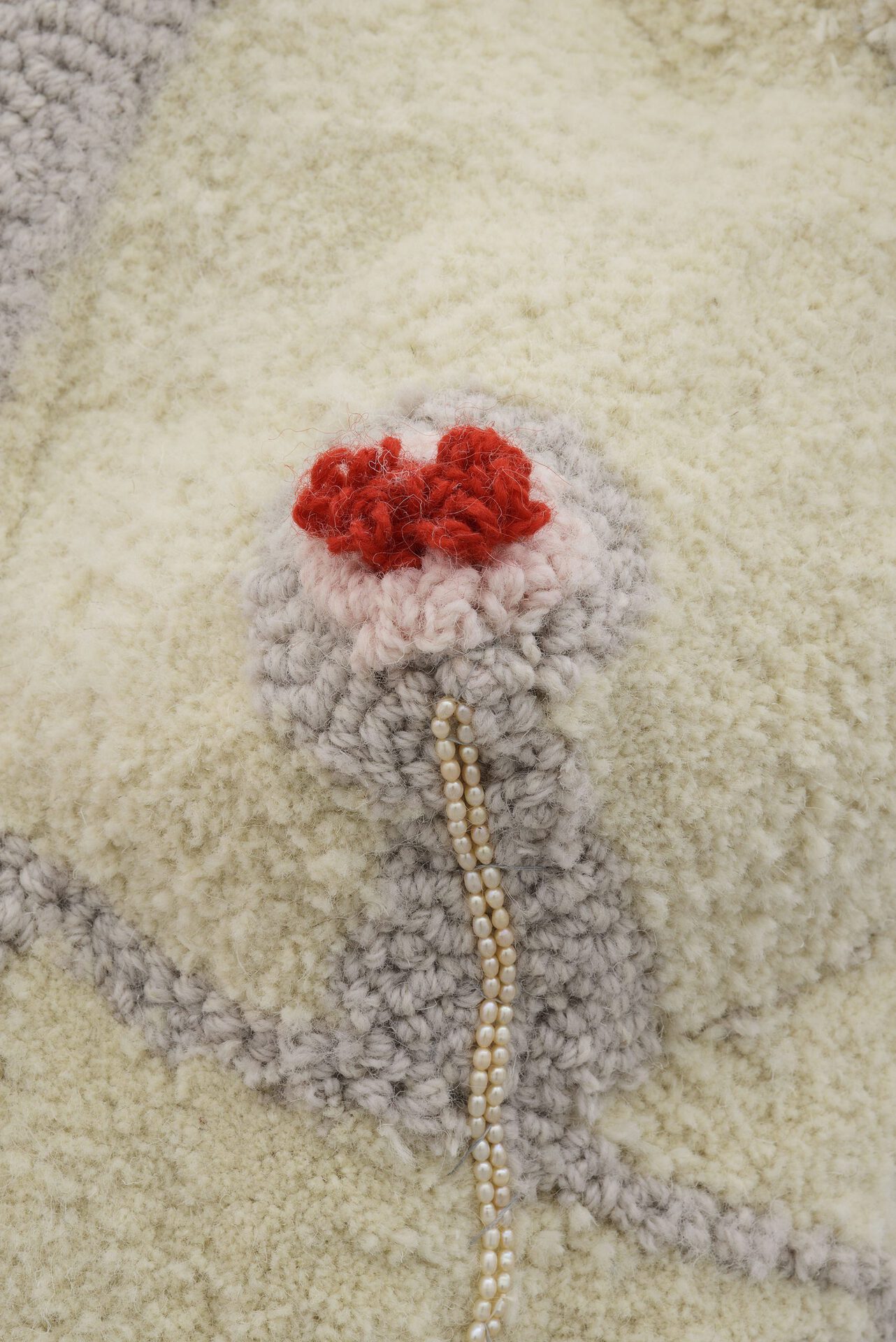
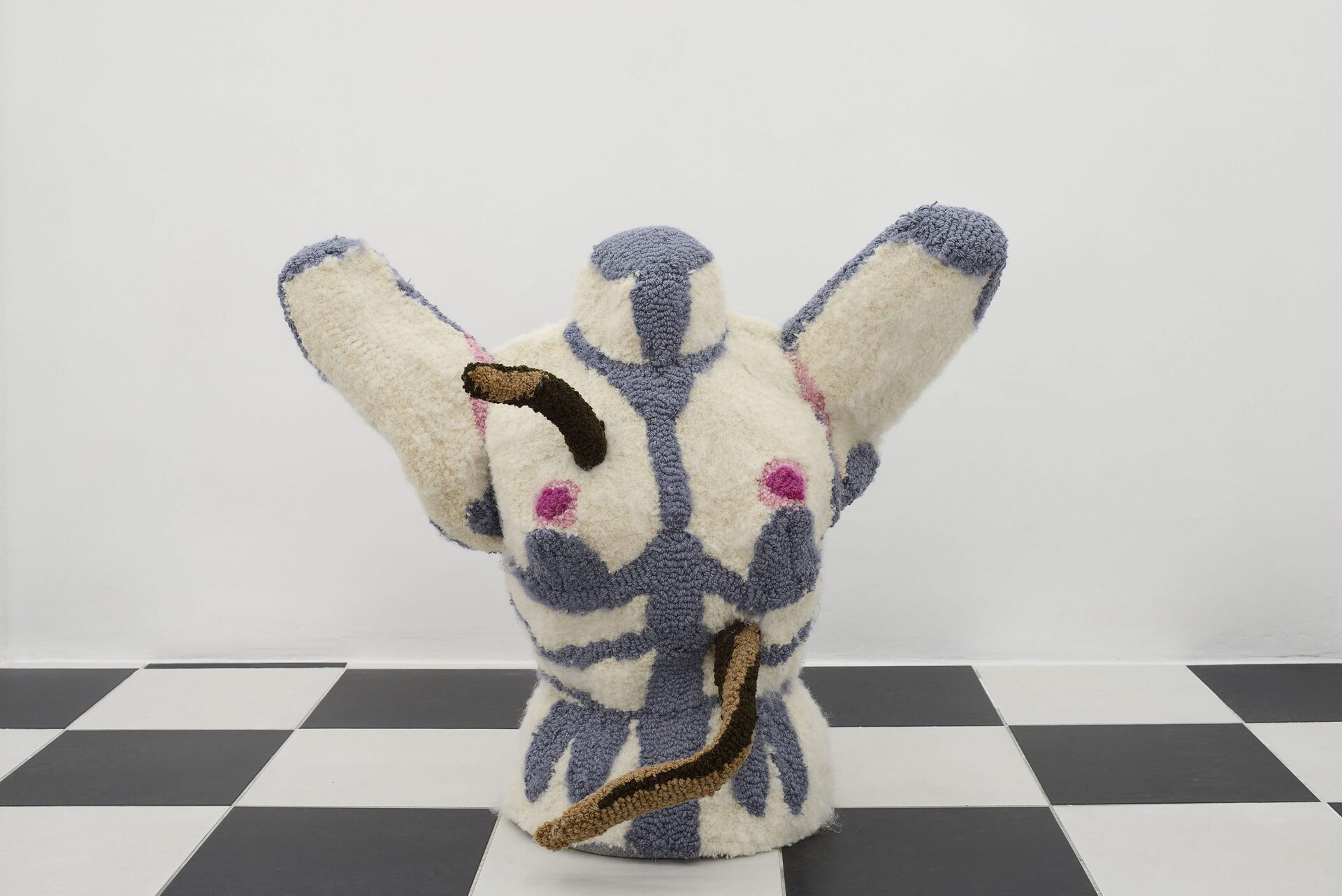
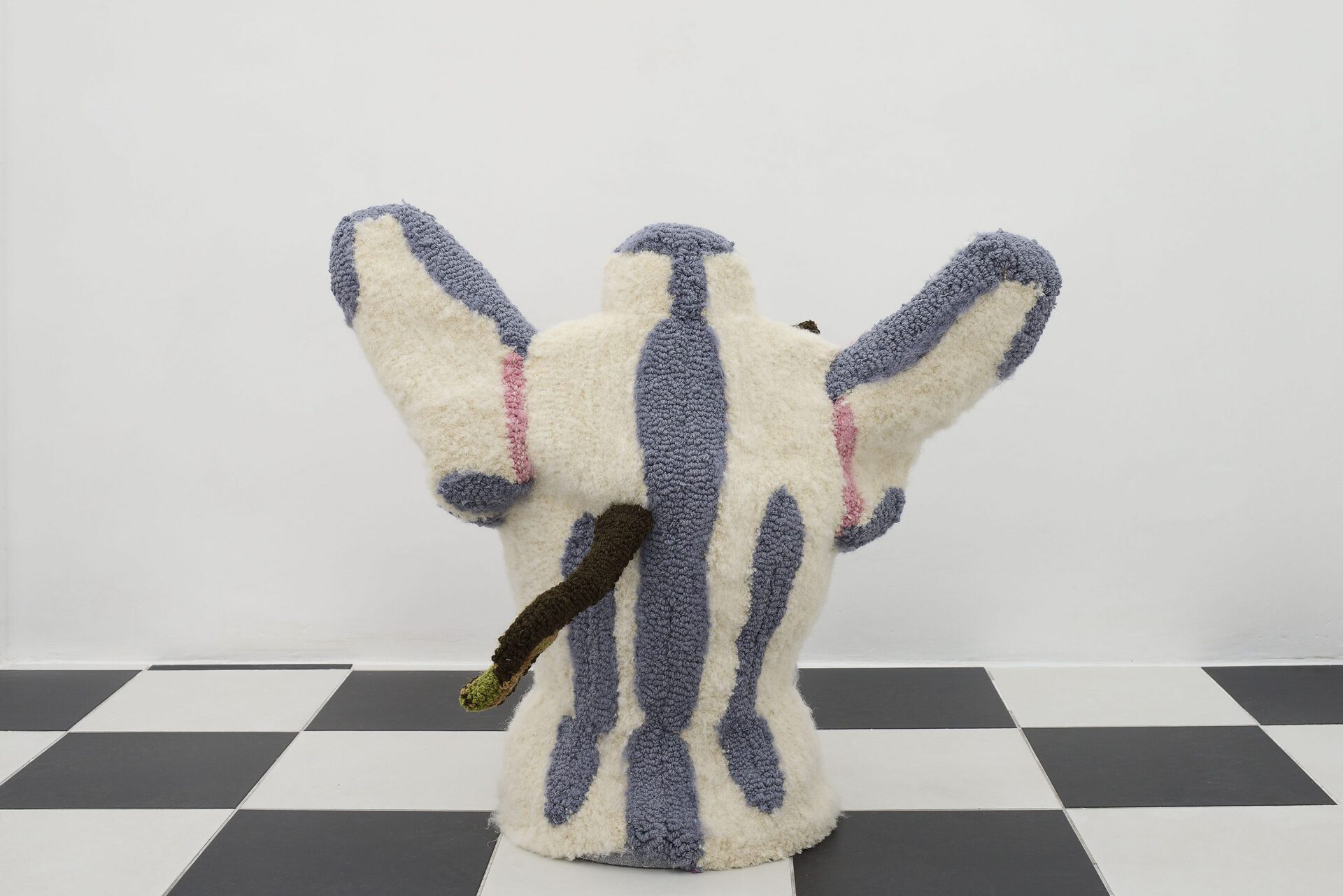

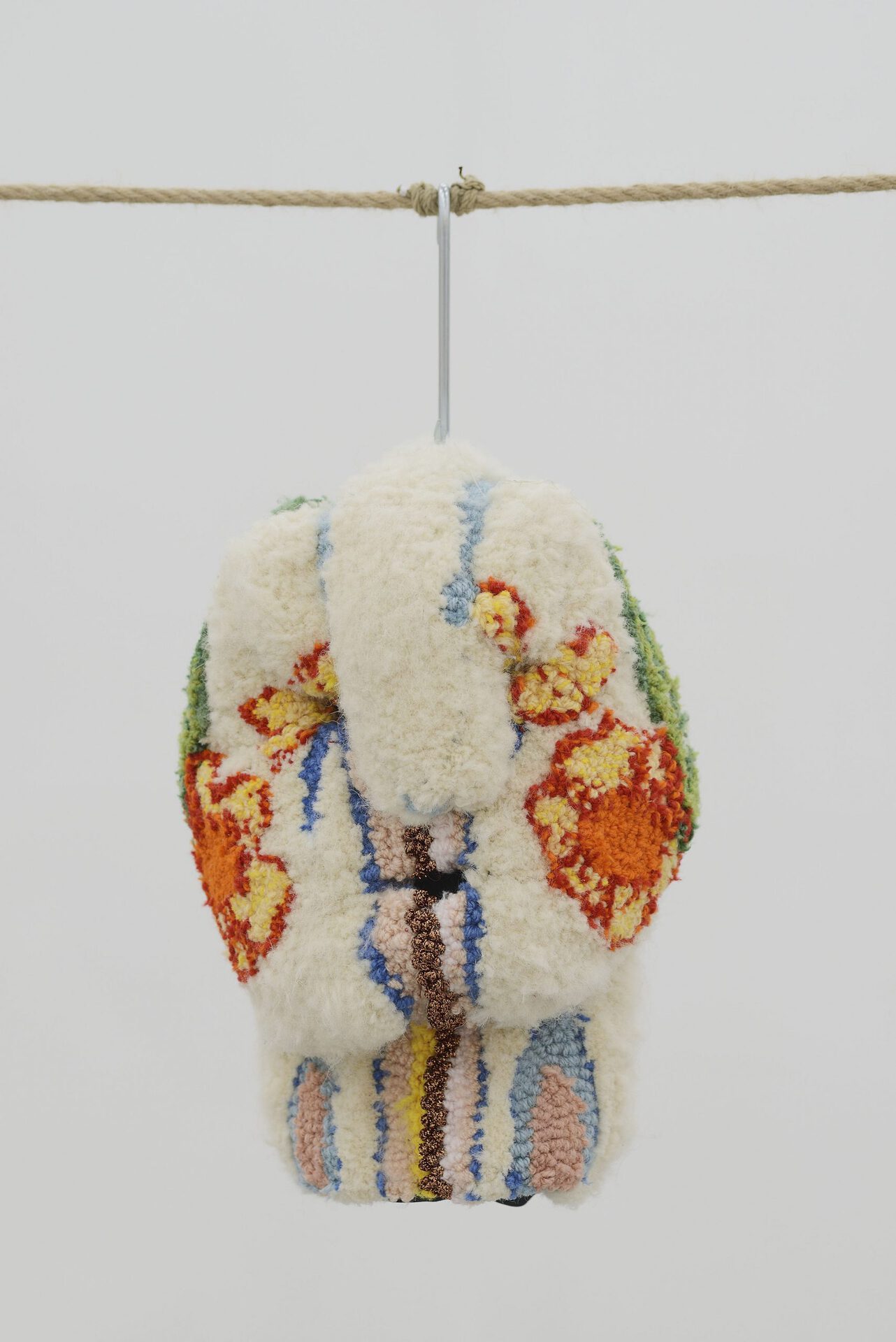
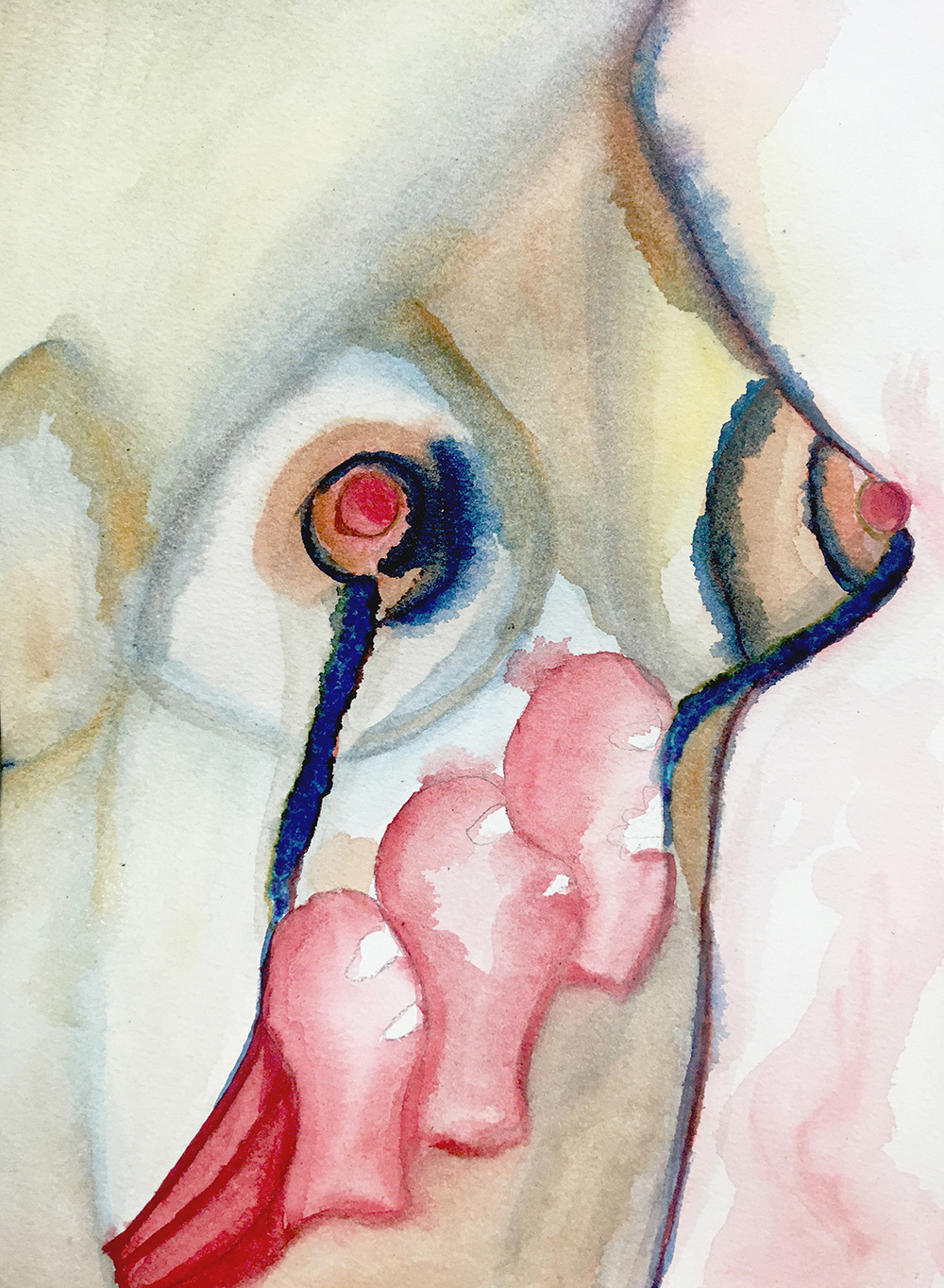
Location
ADADate
28.05 –24.09.2021Photography
Roberto ApaSubheadline
For her solo exhibition at ADA, Anna Perach presents an installation formed of three sculptural elements. Conceptually this exhibition explores the narrative of the detachment of the head and body in the female form. The sculptures more specifically investigate the brutality of the compartmentalisation of feminine body throughout different resources and stories in Western history.Text
For her solo exhibition at ADA, Anna Perach presents an installation formed of three sculptural elements. Conceptually this exhibition explores the narrative of the detachment of the head and body in the female form. The sculptures more specifically investigate the brutality of the compartmentalisation of feminine body throughout different resources and stories in Western history.
Seven Wives, 2020, consists of seven tufted heads hanging on a hemp rope by S-shaped hooks often used for hanging meat. Each head represents the one of the seven female archetypes proposed by psychoanalyst Carl Jung: maiden, huntress, lover, queen, mystic, sage and mother. The idea of hanging the heads draws its inspiration from an illustration for the folktale of Bluebeard depicting Bluebeard’s hanging dead wives, symbol of the violent and irrational behaviour afflicted to the female body throughout history.
Daphne, 2021, and Transformer, 2021, are two tufted sculptures inspired by Griselda Pollock’s reading of Apollo and Daphne (1622-25) by Gian Lorenzo Bernini in her seminal book After-Affects/After-Image (2013). In her writing, Pollock describes her experience when looking at Daphne’s gasping, open mouth as if feeling Daphne’s soundless and desperate agony for Apollo’s undesired touch and her subsequent transformation into a tree. Perach recreates in her version the position of Daphne in Bernini’s piece but removes the negative figure of Apollo. Daphne is a dynamic, transitioning body but also an amputated one, lacking a head for expression and arms for touch and protection. Transformer complements Daphne, the same body is here examined only as a torso penetrated by the branches that come from within it.
Anna Perach’s artistic practice explores the dynamic between personal and cultural myths, finding the specific interest in how our private narratives are deeply rooted in ancient folklore and storytelling. She creates sculptural hybrids starting from female archetypes, in order to examine ideas of identity, gender and craft. Her main mediums are performance and wearable sculptures realised with a technique called tufting, which consists in making hand-made carpet textile. Through this medium, Perach examines how elements associated with the domestic sphere such as textiles and carpet operate as an extension of the self and reflect one's heritage and gender role. In her performances the tufted, domestic carpet serves as an external added layer of skin, which hides the physical body but exposes fragments of the self.
Anna Perach (1985, USSR) is a Ukrainian born Israeli artist, living and working in London, UK. She holds an MFA in fine art (distinction) from Goldsmiths, University of London (2020).
Recent exhibitions include: 2021 - Herzliya Museum of Contemporary Art, Israel, IL (upcoming); ADA, Rome, IT; Vitrine gallery, Basel, CH; The Ryder Projects, Madrid, ES; Cookelatham gallery, London, UK. 2020 - Saatchi Gallery, London, UK; White Cube gallery, London, UK; Larsen Warner gallery, Stockholm, SWE; Centrale Fies, Trento, IT. 2019 - MOSTYN, Llandudno, Wales, UK; aqb Project Space, Budapest, HU.
In 2020 she was a finalist at the Birth Rites Collection Biennial Competition for New Works and The Ingram Prize. Anna also received a grant for the production of new work from Procreate Project via the Arts Council England.